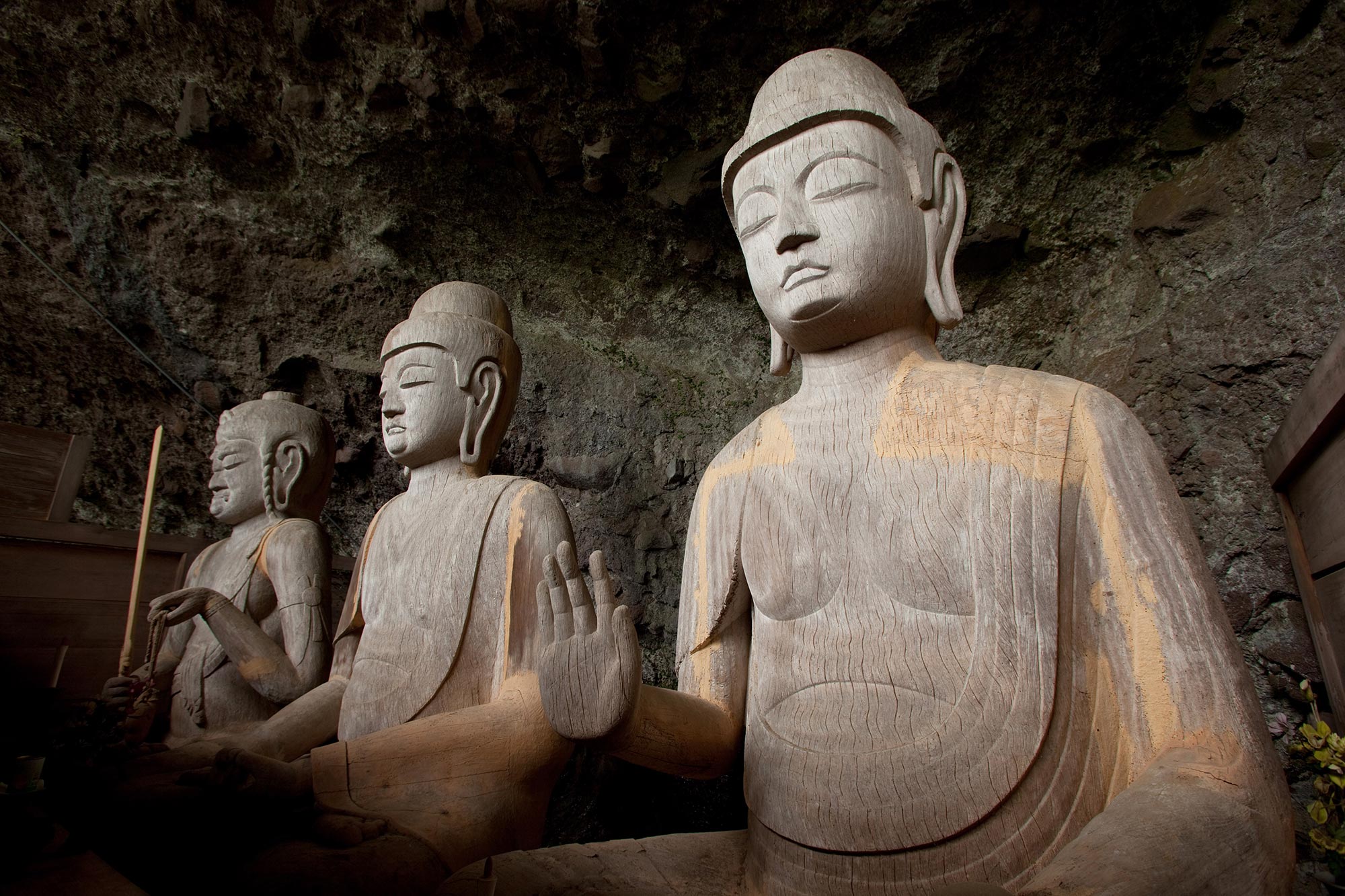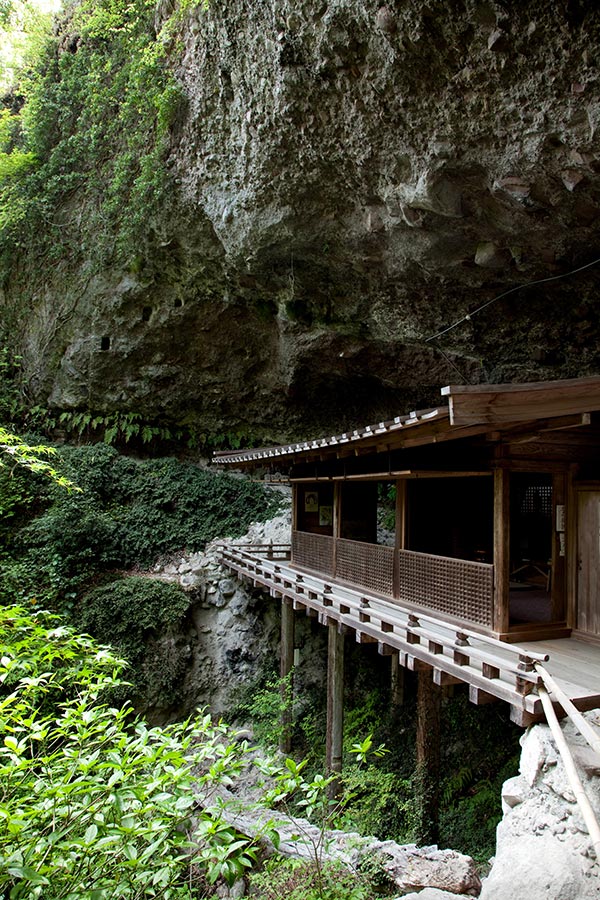

- Kenhoku Area
- Culture of Stone
- Shrines・Temples
Ryuganji Temple
Photography/MIYAJI Yasuhiko
a Buddha Floating in a Rock Cave
A small temple built in the kake-zukuri (overhanging) style sits inside an enormous rock cave as though it had been thrown in. This is the inner sanctum of Ryuganji Temple. Once inside, a triad of floating wooden Buddhas greets visitors. This statue will make you want to close your eyes and kneel.
Going upstream along the Innai River, a tributary of Era River in the town of Innai, Usa, you’ll find a large gate where Ryuganji Temple is. Take the back mountain path, then follow the road along the rock wall, and the entirety of the inner sanctum will appear before your eyes. At your feet will be a valley. There is a ladder carved from a single, giant tree. People probably used this before the cliff road was made.
The hall of worship is about 5.46 m long and 3.64 m wide. Only the outer sanctum roof is a slanted shingled roof. The foundational beams of the floor go across both bedrocks, supported firmly by three pillars. Open the wooden doors next to the latticed shutters on the front and enter, and you’ll come face to face with the Buddhas of the inner sanctum, separated by a lattice placed on the outer sanctum. The inner sanctum has no roof. The stone serves as a natural ceiling.
These wooden Buddhas are, from the right, Yakushi Nyorai, Amida Nyorai, and Fudou Myouou, each around three meters tall. Made from a single tree, they are as white as the bark of the tree. However, the waist downward of these Buddhas seated in the lotus position is made using a crosspiece.
The way these three seated figures are carved is bold. However, their faces are noble and their limbs graceful. From the relatively easy method used, it seems these were made during the transition from Magaibutsu Buddhas in the rock cave to carved wooden Buddhas, and are estimated to be from the middle of the Fujiwara period. Inside the hall of worship is the inscription 1286, and it seems that this was at first a simple altar with seated Buddhas. Perhaps because the building does not so much protect the Buddhas as it hides them that they can be viewed so closely. Thanks to this, the Buddhas appear white beneath the natural light. It is also a Nationally Designated Important Cultural Property.
According to legend, in 746, the priest Gyouki was met with heavy rain on his way to Usa Jingu Shrine, stayed here and carved the Buddha from a camphor tree, founding the temple. At the time, it belonged to the Tendai sect, but later shifted to Zen.

A small hall of worship built within a cave.

